4 Questions For Master Distributors
They evolved to fill market niches, and now confront a rapidly changing marketplace.
We wordsmiths like terms sharply defined. That’s a difficult quest when dealing with the subject of master distribution.
Common industry parlance refers to the PHCP world’s traditional “two-step” distribution channel - the two steps signifying manufacturer-distributor. Master distributors - some of whom refer to themselves as “redistributors” - turn that picture into abstract art.
Master distributors personify what Adam Smith deemed “the invisible hand of the marketplace” that distributes goods with maximum efficiency. The manufacturer-distributor channel serves as the best way to get the bulk of our industry’s goods to market, but it doesn’t work all that well for dealing with oddball items, short orders, imports, repair parts and various specialty goods that clog this industry’s normal stream of commerce. Master distributors evolved to dredge the channel.

Now, the business of master distribution itself is evolving in response to economic mutations of our time. Supply House Times recently spoke to some of the industry’s prominent master distributors about their business and the challenges they face. We focused primarily on plumbing-heating master distributors. The PVF master distribution sector will be examined more closely later in the year. Our conversations can be summarized as follows.
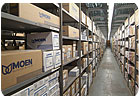
Photo courtesy of MDC, www.trumbull.com/mdc.html.
1. Who qualifies as a master distributor?
The generally accepted definition is that of a distributor whose main business is selling to other distributors. Almost every distributor sells a little bit of fill-in merchandise to friendly competitors or distributors in other markets, but master distributors make their living selling exclusively or almost so to other distributors.
This raises a couple of other issues. One has to do with distinguishing a master distributor from a manufacturer. The other wrestles with the fact that some large traditional distributors have expanded into master distribution as a way to capitalize on huge inventory and facility investments.
“Master distributors should only qualify as such by the extent of the inventory they warehouse of a particular manufacturer and be recognized as such by them,” said Metropolitan Pipe & Supply Vice President Valve Sales Richard A. Rollins.
Some master distributors reject the term. They consider themselves manufacturers. This is especially true of those whose business arose from importing manufactured goods from overseas.
In the old days, it was pretty simple to define a manufacturer as someone who owned and operated one or more factories, usually in the U.S. Now, the prevalence of overseas outsourcing renders that traditional definition suspect.
Matco-Norca, which imports a wide variety of plumbing and PVF products, is a prime example of a company that blurs the distinction between manufacturer and master distributor. The company may not own the factories that produce its goods, but that scarcely matters in terms of responsibility and liability.
“GE doesn’t make its toasters either,” said Matco-Norca President Dov Metz, whose father started the business in 1952. “We sell primarily to plumbing wholesalers and thus are considered a master distributor. But when product comes in with our name on it, there’s nobody else the customer can go to with legal issues and so on, so we’re considered ‘the factory.’”
Matco-Norca and other importers have to abide by ASTM and ANSI standards that impose stringent requirements on manufacturing processes and the final product. With cast iron soil pipe, for example, this entails testing the pour at the mill every four hours, then dimensional analysis on the finished product and keeping records for seven years. Tests also are required on raw material for radioactivity, tensile strength and metallurgy. Inspections have to be performed by third-party inspectors. According to Metz, Matco-Norca sells many of its products in Europe, where DIN standards often are even more stringent than here.
Many master distributors trace their heritage to importing. Like manufacturers, their business is geared to filling large-quantity orders.
A flip side of the coin consists of those master distributors who got into the business from the inside out, i.e., domestic distributors that expanded beyond traditional distribution markets to encompass distributor-to-distributor sales.
Some, like Kessler Sales & Distribution (KSD), are former distributors that have evolved into full-fledged master distributors. According to Vice President/General Manager Tim Hagan, Kessler began 74 years ago as a traditional plumbing wholesaler, but in the 1970s began transitioning away from servicing contractors to focus on servicing other wholesalers. “Our commitment to our wholesaler base is that we will not sell our customers’ customers,” said Hagan.
A new kind of inside-out strategy has arisen in recent times thanks to industry consolidation and product proliferation. As traditional PHC distributors have gotten big and spread out geographically, they have relied on central distribution facilities to feed their branches. These distribution centers contain hundreds of thousands of square feet of warehouse space and handle prodigious amounts of inventory.
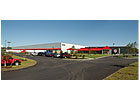
Photo courtesy CD Sales, www.centraldistributionsales.com.
Turning that inventory - especially the C and D items - becomes easier to do if you can tap into a national market in addition to regional branches. This is the thinking behind master distributors such as Ferguson’s Stock Market, F.W. Webb’s CD Sales arm and The Master Distribution Center (MDC), a division of Trumbull Industries Inc.
One of the first PHC distributors to branch into master distribution was the Gulf Coast chain LCR, which established Your Other Warehouse (YOW), now owned by Home Depot. The MDC was another pioneer.
Based in Youngstown, OH, amid a declining steel economy, Trumbull has long felt compelled to experiment with nontraditional ways of doing business to survive. According to Vice President Sam Miller, their master distribution business began with encouragement from Jacuzzi. Manufacturers have a vested interest in setting up master distributors who carry extravagant breadth and depth of inventory in order to make their products quickly accessible to the widest possible audience - including smaller distributors who can’t afford massive inventories.
Fast-forward about 25 years, and you find the MDC as one of the nation’s most experienced and prominent master distributors of plumbing products. Miller said they serve as a master distributor for about 20 lines with a vast array of product breadth and depth. He estimates, for example, that the MDC carries all but about 40 of Moen’s 3,500 SKUs.
“You need a lot of sales action to make master distribution work,” commented Miller. “It really helps our traditional distribution business in the local markets, because we couldn’t justify the inventory investment otherwise.”
One way master distributors cope with the enormous inventory demands is to become product assemblers. Different product models can be produced from the same components. So they might store various parts and pieces and assemble those components in different configurations.
The Distribution Point is a master distributor with an unusual pedigree. It was founded in 2003 as a “pure” master distributor with funding from some 60 independent plumbing wholesalers who wanted to assure a source of supply following Home Depot’s purchase of YOW a couple of years before. “We see value in supporting the wholesaler channel,” commented President Ranson Roussel.
Neuco Inc. is another master distributor whose genesis is hard to label. The company started out selling hay, coal and grain way back in 1907. Later they concentrated on coal and diversified into fuel oil and heating installations following WWII. In the 1960s, the company became a distributor of automatic controls, selling to wholesalers and industrial users in its local territory only.
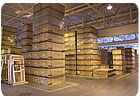
Photo courtesy of MDC, www.trumbull.com/mdc.html.
2. What are the barriers to entry?
“Master distribution is not a business for the faint of heart,” said Miller. “It takes tremendous space for one thing. We have a 420,000-square-foot distribution center. Not many people can do that.”
F.W. Webb’s CD Sales division also arose with encouragement from certain vendors and as a way to take advantage of that company’s 400,000+-sq.-ft. distribution center in Amherst, NH. One of the big problems faced by any distributor trying to get into master distribution is that many potential customers are averse to patronizing companies they view as competitors. That’s why most “inside-out” master distributors set up divisions with different names to service the distributor market segment. In essence they try to brand their distribution centers.
“We need to focus on the reason we’re all in business,” said F.W. Webb Senior Vice President John Provencal. “It’s to service the customer. He didn’t come to me, he came to you, and doesn’t care where he gets it as long as he gets it in a timely fashion.
“The key to building business with other distributors is to make sure the first time they call you, you have the product. We have to be very deep in that product line and carry it in its entirety,” said Provencal.
One of the trickiest aspects of the master distribution business is walking the tightrope between building volume and being choosy about who you sell. This is a sensitive issue with master distributors, and many chose not to speak with us for the record because of it.
Because of low volume purchases, it’s crucial for a plumbing master distributor to build a large customer base. Yet, it could be the kiss of death for a master distributor to sell to the customers of their customers. Many master distributors are on the vendor list of buying groups, where they get scrutinized for conflicts with member businesses.
It’s safe to assume that most master distributors strive to avoid the kiss of death. Word spreads quickly around this industry and they would not last long if they made a habit of doing an end run around their customers. Yet, it’s not always clear-cut who might be the potential customer of a customer.
Unlike the importing master distributors, the “inside-out” business is geared to small and special orders. Profit margins have to be pretty large compared to that of wholesale distribution. For the most part this is a business driven more by “how soon” than “how much.”
Plumbing master distributors require fairly substantial marketing budgets. Because purchases tend to be infrequent, newcomers to this field face a daunting challenge in getting people to recognize they’re out there and to call when they have a need. It requires regular advertising to build name recognition and front-of-mind awareness.
Some advertise in this magazine to reach distributors nationwide. Direct mail is another favorite way to reach a vast audience. Miller said the MDC maintains a mailing list of almost 30,000 individuals from distribution companies and other customer segments. It took them decades to build that large of a customer base, and they kill a lot of trees keeping in touch on a regular basis. They publish a PDF-based catalog with over 3,500 full-color pages, and this massive amount of information is contained in one single CD.
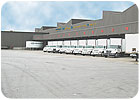
Photo courtesy of MDC, www.trumbull.com/mdc.html.
3. What are the biggest challenges facing master distributors?
One of the most prevalent answers we received to this question had to do with freight and shipping issues.
“Freight is a big concern,” said Kessler’s Tim Hagan. “The value we bring to the table is that we shrink time and space by shipping quicker and in smaller quantities than the mills and the factories. We have our greatest success with products that are either too large or too expensive for a wholesaler to stock in bulk. Getting the product out of our inventory and to our customer is getting more expensive by the minute. The costs of trucks, fuel, drivers and insurance are all going up.”
“Traditional plumbing wholesalers think about freight in relation to the trucks on their dock,” said the MDC’s Sam Miller. “This business is about loading third-party carriers, not using your own equipment for the most part. This presents challenges in terms of packaging and cost, as well as providing tracking numbers for orders.”
The extraordinary run-up in commodity metals prices in the last couple of years was cited by a number of master distributors as a thorny issue. However, there is a sense that this is a short-term problem and volatility will subside as supply comes back in sync with what has been a large surge of demand from China and India in particular.
“One issue is the lengthening of the global supply chain,” said The Distribution Point’s Roussel. “The competitive landscape dictates that manufacturers keep striving for low cost production, and the result is a lengthier cycle time. This occurrence, in addition to the explosion of product offerings, has been a key component in the rise of the master distribution segment.”
“One concern is vendors changing their approach to the markets,” said Tim Hagan. He explained that vendor minimum order quantities can change in soft markets, which undermines one of the fundamental drivers of the master distribution business. “Markets at times can go from robust to lean and back again in what seems like the blink of an eye,” he said.
“At KSD, we share detailed sales information with all of our vendors,” Hagan continued. “Solid, truthful information - both good and bad - is key to making any relationship grow, and it’s no different between master distributors and vendors.”
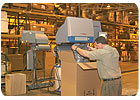
Photo courtesy of MDC, www.trumbull.com/mdc.html.
4. What does the future hold for master distributors?
They say nothing is guaranteed except death and taxes, and this stark reality rings especially true with master distributors. Their business arose in response to niche opportunities in a dynamic marketplace. That marketplace is changing more rapidly than ever before. That could spell doom for some companies, opportunities for others.
Consolidation is a big issue facing almost every master distributor. Every small independent wholesaler that gets bought by one of the chains is one less customer for the master distributors. They face a constant struggle to come up with new customers to replace those lost to this kind of attrition. At the same time, many long-time master distributors face new competition from the large chains getting into the business to wring the most value out of facility and inventory investments.
The last 10 years or so have brought more changes to the PHCP distribution industry than probably the entire prior postwar era. The next 10 might be even more dynamic.
One profound change taking place under the radar of many people in the industry is the rise of Internet retailers of plumbing products. “Most wholesalers would never dream it’s as big a business as it is,” said Sam Miller.
According to Miller, the ramifications are huge for both distributors and master distributors. “What it’s done is empower the consumer. If you’re willing to spend the time, you can find out everything about our industry’s products. You can find out the list price, the net price, what people think about it, how it’s installed and whether they like the company they bought it from.
“There’s no mystery anymore. The Internet creates clarity. Once you narrow down what it is you want, you then can shop around with different folks to drive down the cost,” he said.
An analogy that pops to mind is what the Internet has done to change car buying in recent years. Edwards Automotive Services and similar Web sites have lent transparency to a business that used to be a test of negotiating skills and wills. Now, more and more auto buyers go into dealerships knowing what they “should” be paying for any given product, and much price dickering has gone by the wayside. One would think this has cut into dealer profit margins, except there hasn’t been a surge in auto dealers going broke. The best among them have learned to adapt by increasing volume and/or providing value-added services.
So it will be with challenges presented by the evolving PHCP marketplace. “Customers call us because they have an immediate need that can’t be filled any other way,” said Ranson Roussel of The Distribution Point. “Our job is to respond to those needs as quickly and efficiently as possible.”
Neuco’s president, Paul Neustadt, is another who sees a continued bright future for master distributors. “Manufacturers have started to recognize the cost of supporting some smaller distributors and are beginning to refer these customers to their master distributors, who are better equipped to handle smaller orders. Continuing this type of review would benefit the manufacturer, smaller distributor and the master distributor, all the while improving the selling experience.”
Looking for a reprint of this article?
From high-res PDFs to custom plaques, order your copy today!


